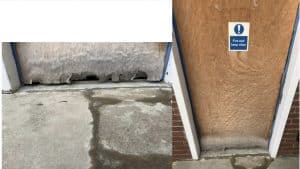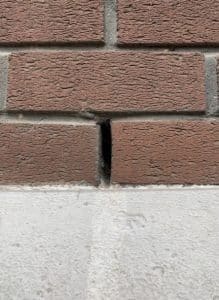Commercial Housing Pest Management Case Study: South West London, SW19
Recently we were asked to undertake pest management at a commercial housing site in South West London. In this case study we explore the tools and techniques we used to tackle the long-standing issues on this site.
We attended the site in Wimbledon, South West London, due to reports of Bed Bugs, Stored Products Insects, German Cockroaches, and Mice and Rats.
Context
The building consists of 72 flats with a long history of pest issues. When the contractor called Mercury Pest Control, several pest control contractors had tried to tackle the problems, but with little success. As a result, there were many issues on the site, including:
- Poor hygiene in multiple flats.
- Multiple occupancies and tenants were moving from flat-to-flat spreading activity into other building areas.
- Inconsistent reporting regarding hygiene standards and a ‘one size fits all’ approach to treatment.
Additionally, no measures were in place to prevent external ingress, such as around doors and external pipework.


How did we approach the pest management at the commercial housing site in South West London?
The initial approach to monitoring and control using structured Integrated Pest Management
- We inspected the flats and utilised a traffic light reporting system. This approach used a Red for high risk, Amber for Medium, and a Green for low risk. This approach meant we could identify the main culprits and properties with high levels of pest activity.
- Flats were then closely monitored using insect monitors and gel baits applied for the German Cockroaches. However, we did not apply rodenticides to avoid the Cockroaches using them as a food source, which previous pest controllers overlooked.
- We advised on hygiene standards. For example, those with poor hygiene were Flats with poor hygiene were then instructed to carry out deep cleans and wash clothing at a high temperature.
- External rat control units were applied around the London site to monitor rat activity, as the residents had reported multiple sightings. In addition, the building is next to an industrial and waste management site, so external influences for rodent activity were high and needed to be considered.
We undertook regular follow-up visits to monitor our approach
We took significant steps to remedy the issues at this site. Initially, the focus was those flats with the most activity to ensure treatment plans were in place. We also:
- Applied residual insecticides to control bed bug activity and German Cockroaches;
- Used monitoring traps to identify any further German cockroach activity in other flats (German cockroaches are nocturnal and visual sightings are not always possible with low-medium infestations during daytime treatment visits);
- Applied gel baits behind kitchen appliances, wiring, pipework, fridges, washing machines and dishwashers where harbourage for the cockroaches is desirable;
- Removed risers, ceiling panels, and applied gel baits and insect monitor traps for intrusive baiting and monitoring between floors. This is highly effective when carrying out pest control treatments for blocks of flats in London; and
- Inspected external rat units to identify where takes were found in the car park and refuse area. Bait station units were replenished accordingly and reviewed them regularly at follow-up visits
- We also checked for any deceased rodents, removing them when found.
Pest proofing
- We undertook a separate report to identify internal and external pest ingress points throughout the site, which was then shared with the building management. We included critical recommendations for the phasing of each stage of the proofing.
- For instance, external areas such as doors, pipework, weep holes and air-bricks and defects on external air-bricks usually require immediate attention to reduce the risk of further ingress.
- In comparison, the recommendation was to prove internal proofing last to avoid pushing activity around the building areas. Completing proofing too early is a typical pest control contractor mistake. Proofing areas too early – will only move rodents into other building areas and cause disruption rather than eradication. Internal proofing is most effective when implemented during low activity levels or once entirely eradicated.
Conclusions and key learnings: commercial housing pest management
- An integrated pest management approach to tackling areas of high infestation is critical to address issues and proof against future risks of pest ingress.
- Regular communication with site staff, residents and management through detailed reporting and recommendations is essential.
